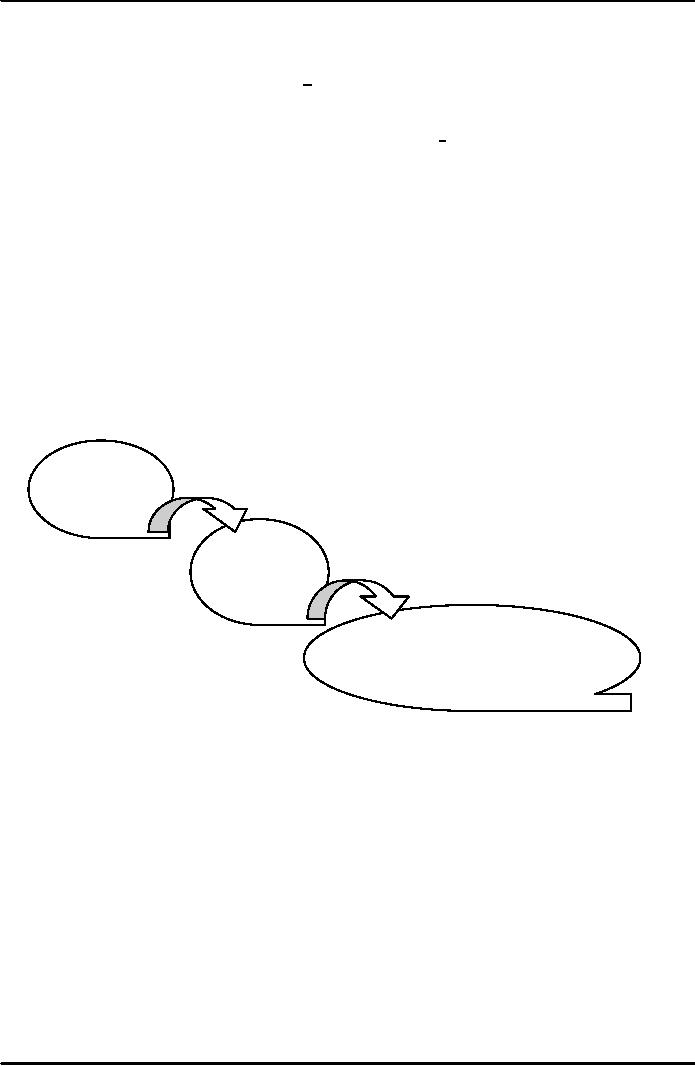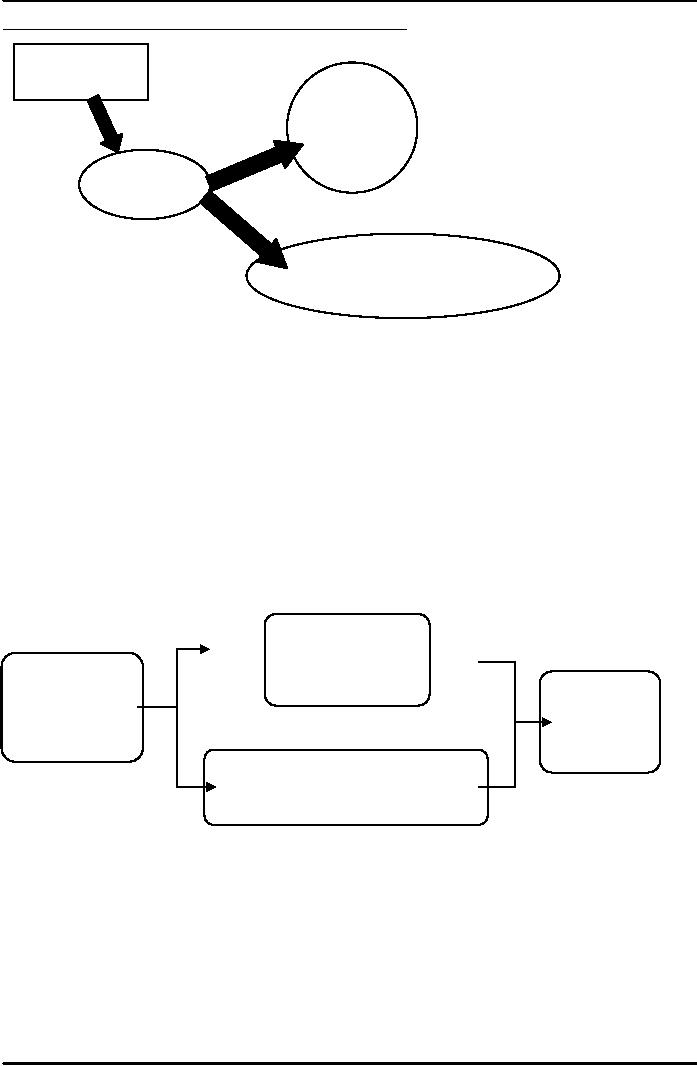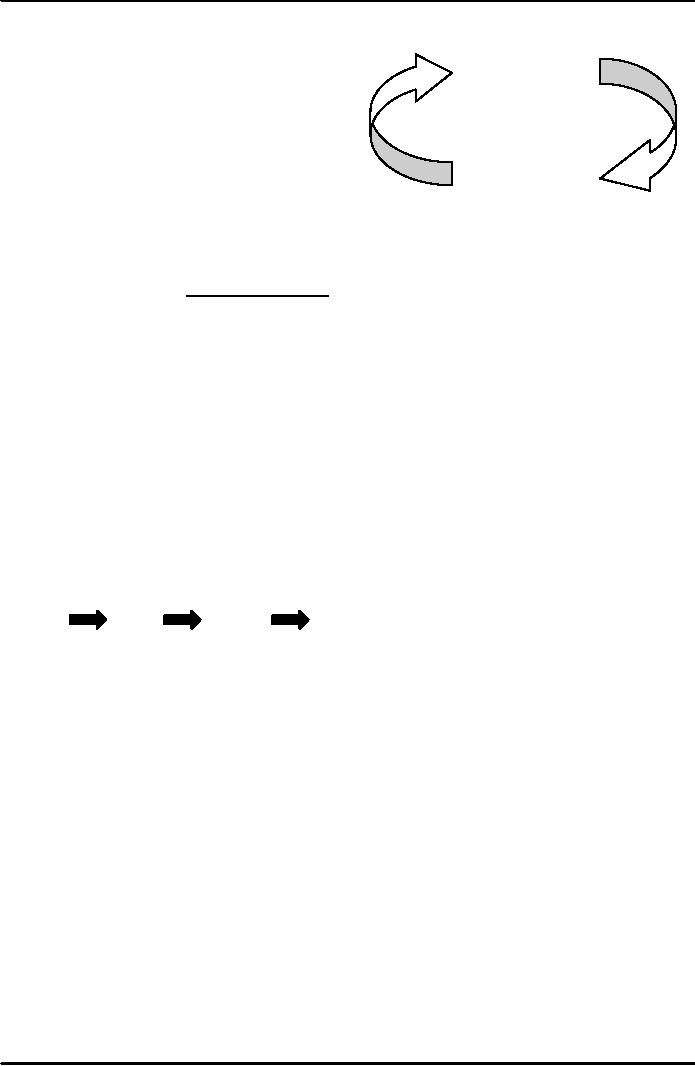 |

Introduction
to Psychology PSY101
VU
Lesson
28
EMOTIONS
II
Physiological
Changes during
Emotions
�
Psychologists
believed that emotions can be measured
quantitatively
by observing
different physiological
responses
of the individual = indicators of
emotions.
�
They
also believed that they themselves
are different emotional
states.
�
The
major physiological changes that occur
during emotions are:
1.
Respiratory Changes
�
The
most apparent and obvious
change during
emotions.
�
During
emotions, respiration increases; occurs
also when the person is happy or
excited.
�
But
the production and secretion of
saliva decreases as the process of
respiration increases.
2.
Pupillometrics
�
Darwin
was the first person who
identifies this phenomenon.
�
Pupil
of the eye is very responsive during
emotions.
�
Dilates at
favorable stimulus and contracts at
unfavorable stimulus.
�
Our
pupil is also very responsive to
favorable and unfavorable sounds
and taste.
3.
Changes in Blood Pressure and heart
rate
�
Variations
in blood pressure occur
during emotions; usually
increases during an emotional
state.
�
Heartbeat
also increases during
emotions.
�
Increased
blood pressure and
heightened heart rate for
prolonged periods may lead
to coronary
heart
disease.
4.
Glandular Responses
�
During
strong emotional states such
as anger or fear, excessive
amounts of hormones adrenaline
and
nor
adrenaline are
secreted into the blood
stream.
�
Due
to this secretion; Liver
secretes excessive amounts of
glucose directly into the
blood stream that
causes
the blood to clot rapidly in
case of injury or
damage.
�
Blood
pressure and sugar level
rises, pulse become fast,
air passage of the lungs enlarges
and causes more air
into
the lungs, pupil enlarge,
sweat appears all over the
body particularly on hands, and
temperature of the
skin
rises.
�
Nor
adrenaline helps to constrict the blood
vessels, thus making it available to
other parts of the body
in
case
of injury.
�
Pituitary
and thyroid glands are
also responsive to emotional
states.
�
All
the glandular responses help to cope
physically with the emotional as
well as emergency
situations.Gastrointestinal
Function
�
Stomach
and intestines are also
very responsive to emotional
states.
�
They
either start working at a
very high rate or stop
entirely.
�
During
strong emotional arousal,
its working speed decreases
and flow of blood
is
more
towards the brain and
the skeletal muscles rather
than these
organs.
6.
Neural Reactions
�
Besides
affecting visceral organs of
the body, emotions also
bring changes in
the
neural/
nerve activity.
�
Autonomic
division of the P.N.S. is
more effective in this
regard in which
sympathetic
and parasympathetic nervous
systems work
successively.
162

Introduction
to Psychology PSY101
VU
7.
Galvanic Skin Response
�
When
perspiration appears during
emotions, two important
changes occur in
skin's
electrical
stimulation:
oRapid
generation of electromotive
energy
oThe
electrical resistance of skin
changes
�
These
changes can be measured
through
a measurement of "Galvanic
Skin
Response
(GSR)"; formally called "
Psycho Galvanic Response
(PGR).
�Galvanic
skin response, in combination with the
respiration and blood pressure, is
used for lie
detection
with
people who are supposed to be
guilty of some crime.
8.
Emotional Intensity and State of
Arousal
�
Most
of the times we are aware of
our emotional states such as
angry, excited or
afraid,
in all these states, the
physiological conditions are
the same e.g., heart
beat
increases,
face blushes or becomes
pale.
�
That
is why we are unable, at
times, to differentiate between
different emotions
and
the
associated arousal.
Other
Common Bodily Changes during
Emotions
�
Dryness
of throat and
mouth,
�
Muscle
tension,
�
Weakness
or fainting,
�
Trembling,
and
�
Sinking
feeling in heart or
stomach
Theories
of Emotions
�
Psychologists
have attempted to define and
explain the emotional
arousal and
physiological
conditions that accompany
them.
�
A
number of theories have been
developed in this regard,
but the most famous
ones are;
�
James-
Lange theory of
emotions
�
Cannon-
Bard theory of
emotions
�
Schachter-
Singer theory of emotions;
(Cognitive Labeling Theory/
Two Factor
Theory)
Other
important theories include:
�
Cognitive
Appraisal Theory: Richard
Lazarus
�
Cognitive
Theory: Magda Arnold
�
Opponent-
Process Theory: Solomon and
Corbit
�
Activation
Theory: Lindsley
�
Theory
of Emotions: Albert
Ellis
1.
James- Lange Theory of
Emotions
�
Earliest
theory of emotion; now
considered as the classical
approach to emotions.
�
Given
by American psychologist, William James
and Danish psychologist,
Carl
Lange
in the 19th century.
�
Emotional
experience occurs in reaction to
instinctive bodily events
that take place
as
a result of an external situation:
"...we feel sorry because we
cry, angry
because
we
strike, afraid because we
tremble" (James,
1890).
�
Physiological
changes create specific
sensations, and our brain
interprets these
sensations
as different emotions.
163

Introduction
to Psychology PSY101
VU
�Theory
asserts that awareness of the
physiological responses determines our
emotional arousal.
Sequence
of Events in James-Lange
Model
Experience
of an emotion-involving situation i.e.,
find oneself in a waiting
room before first job
interview.
Physiological
responses take
place; visceral bodily
changes are activated e.g.
pounding heart, sweaty
palms,
respiration
increases and other physiological
states.
Brain
interprets these physiological changes as
emotional experience. In the case of the
interview situation,
fear.
Criticism
against James-Lange model
�
On
most emotional occasions we
experience the emotion quite
immediately after a
triggering
stimulus
e.g. hearing loud bang
and being startled. Are
our visceral responses that
fast??
�
Many
a time we don't even have
enough time for this
intermediate part. We feel
the emotion
immediately
after the stimulus is
registered e.g. feeling
disgust at the very sight of
someone we
hate.
�
The
most basic criticism of this
theory is emotional experience
(fear) results from the
physiological
responses
after evaluating the
situation.
�
On
many occasions we experience
physiological changes but no
emotion e.g. patients
of
hypertension
experience raised blood
pressure but do not
experience associated emotion. It is
the
case
with joggers whose heart
does pound but there is no
emotional experience.
How
do same physiological changes create
different emotional
experiences???
.
Emotion-
involving
Event
Visceral
bodily
changes
Brain
interprets the
visceral
changes
as emotional
experience
2.
Cannon- Bard Theory of Emotions
�
Given
by Walter Canon and Philip
Bard in 1920's
�
The
theory assumes that
emotional states and the
physiological reactions
work
independently,
but are triggered by the
same nerve impulse
simultaneously.
SEQUENCE
OF EVENTS IN CANNON-BARD
THEORY
1.
Perception of the emotion-inducing
stimulus
2.
Thalamus is activated.
3.
Thalamus sends messages to
two sites i.e.,
a)
The Autonomic nervous
system, thereby producing a visceral
response.
b)
The cerebral cortex receives a
message regarding the nature of
emotion being
experienced.
164

Introduction
to Psychology PSY101
VU
SEQUENCE
OF EVENTS IN CANNON-BARD
THEORY
Perception
of
Emotion
Bodily
changes
After
receiving
Thalamus
Message
to the cortex about
emotional
experience
Major
drawback
�
Research
has shown that it is the
hypothalamus and the limbic
system that are responsible
for
emotional
experience, and not the
thalamus!!!!!
3.
Cognitive Labeling Theory/
Two Factor Theory of Emotions
�
Pioneer:
Stanley Schachter and Jerome
Singer (1962).
�
According
to them, emotions result
from the physiological
arousal as well as the
cognitive
appraisal
(evaluation) of the
situation.
�
Arousal
comes first and is general
in nature.
�
Two
forces jointly determine emotional
experience:
Nonspecific
kind of physiological arousal,
and
The
interpretation of the experience based on
environmental cues.
�
Both
of these factors jointly
determine the title/label of the emotion,
and the meaning of one's
reaction.
�
We
observe the environment and
compare ourselves with
others, and this help us
identify our emotion.
Schachter's-
Singer Theory of
Emotions
Pounding
Heart
/Perspiration
Stimulus
elicits
(Arousal)
Felt
emotion
Incoming
car
Fear=
(Perception
of
Emotional
Stimulus)
Arousal
`I
am afraid'/going
to
be hurt(cognitive appraisal/
label
�
Labeling
of the emotional experience is entirely
dependent on the experiencing individual__
one`s own
evaluation.
�
Believed
that physiological arousal determines the
intensity of emotions.
�
Theory
includes the physiology cognitive
processes as well as social
psychology to investigate the nature
of
emotions.
Cognitive
Appraisal Theory: Richard
Lazarus
�
Given
by Richard Lazarus and his
colleagues in 1968
�
The
theory maintains that
emotional experience cannot
solely be understood of
its
own,
but understanding the
environment is to be
evaluated.
�
Appraisal
involves cognition, bodily
responses and
memory.
165

Introduction
to Psychology PSY101
VU
Experienced
Emotion
Richard
Lazarus Gave
two basic types of
appraisal
i.
Primary
appraisal: Evaluate whether
the situation is
threatening
or not
ii.
Secondary appraisal:
Involve alternatives in order
to
deal
with the perceived threat
iii.Reappraisal:
Includes re
evaluating the situation and
alternative
in order to see whether the judgment is
true or
Cognition
not.
5.
Cognitive Theory: Magda
Arnold
�
Given
in 1966; one of the first
ones who use the concept of
cognition in emotional
state
�
His
model is known as "Sequential
model".
�
The
steps involved in emotions
are;
1.
Perception; how
the situation is being perceived.
2.
Appraisal;
Stimulus
is beneficial or harmful to
ourselves.
3.
Determining
emotions with
regard to the prevailing
situation.
4.
Expressing
emotions; Also
accompanying physiological
responses.
5.
Finally,
they all work to give idea whether to
approach a situation or withdraw from
it.
6.
Opponent- Process Theory: Solomon and
Corbit
�
Given
by Richard Solomon and John
Corbit in 1974.
�
Theory
maintains that every
emotional arousal has an
opposite, i.e. when one
type
of
emotion is elicited, and
then there must be an
opposite that is there to
suppress
or
cancel it.
�
In
this way the emotional
arousal remain at some base-
line.
Base
line
State
A
State
B
Baseline
7.
Activation Theory: Lindsley
(1951,
1957)
�
Based
his theory by observing that
reticular system activates
the cortex region in
the
brain
that ultimately aroused/
excites the
organism.
�
Believed
that emotional arousal
activate the reticular part
of the brain present in
the
brain
stem, that ultimately sends
impulses to the thalamus and
cortex and bring
about
emotional arousal.
�
And
if the reticular part is at
rest, then the emotional
state is calm and
relaxing.
8.
Theory of Emotions: Albert
Ellis
�
Given
by American psychologist, Albert
Ellis.
�
According
to him, emotions do not result
from a single cause, but
originate from
three
different ways.
oFirst,
sensory- motor; involves
brain and muscles.
oSecond,
bio chemical stimulation;
function to mediate processes of
ANS, hypothalamus
and
sub- cortical
regions.
oThird,
cognitive and thinking
processes.
To
him, emotions do not exist independently
but involves several stages
in order to take
place.
166
Table of Contents:
- WHAT IS PSYCHOLOGY?:Theoretical perspectives of psychology
- HISTORICAL ROOTS OF MODERN PSYCHOLOGY:HIPPOCRATES, PLATO
- SCHOOLS OF THOUGHT:Biological Approach, Psychodynamic Approach
- PERSPECTIVE/MODEL/APPROACH:Narcosis, Chemotherapy
- THE PSYCHODYNAMIC APPROACH/ MODEL:Psychic Determinism, Preconscious
- BEHAVIORAL APPROACH:Behaviorist Analysis, Basic Terminology, Basic Terminology
- THE HUMANISTIC APPROACH AND THE COGNITIVE APPROACH:Rogers’ Approach
- RESEARCH METHODS IN PSYCHOLOGY (I):Scientific Nature of Psychology
- RESEARCH METHODS IN PSYCHOLOGY (II):Experimental Research
- PHYSICAL DEVELOPMENT AND NATURE NURTURE ISSUE:Nature versus Nurture
- COGNITIVE DEVELOPMENT:Socio- Cultural Factor, The Individual and the Group
- NERVOUS SYSTEM (1):Biological Bases of Behavior, Terminal Buttons
- NERVOUS SYSTEM (2):Membranes of the Brain, Association Areas, Spinal Cord
- ENDOCRINE SYSTEM:Pineal Gland, Pituitary Gland, Dwarfism
- SENSATION:The Human Eye, Cornea, Sclera, Pupil, Iris, Lens
- HEARING (AUDITION) AND BALANCE:The Outer Ear, Auditory Canal
- PERCEPTION I:Max Wertheimer, Figure and Ground, Law of Closure
- PERCEPTION II:Depth Perception, Relative Height, Linear Perspective
- ALTERED STATES OF CONSCIOUSNESS:Electroencephalogram, Hypnosis
- LEARNING:Motor Learning, Problem Solving, Basic Terminology, Conditioning
- OPERANT CONDITIONING:Negative Rein forcer, Punishment, No reinforcement
- COGNITIVE APPROACH:Approach to Learning, Observational Learning
- MEMORY I:Functions of Memory, Encoding and Recoding, Retrieval
- MEMORY II:Long-Term Memory, Declarative Memory, Procedural Memory
- MEMORY III:Memory Disorders/Dysfunctions, Amnesia, Dementia
- SECONDARY/ LEARNT/ PSYCHOLOGICAL MOTIVES:Curiosity, Need for affiliation
- EMOTIONS I:Defining Emotions, Behavioral component, Cognitive component
- EMOTIONS II:Respiratory Changes, Pupillometrics, Glandular Responses
- COGNITION AND THINKING:Cognitive Psychology, Mental Images, Concepts
- THINKING, REASONING, PROBLEM- SOLVING AND CREATIVITY:Mental shortcuts
- PERSONALITY I:Definition of Personality, Theories of Personality
- PERSONALITY II:Surface traits, Source Traits, For learning theorists, Albert Bandura
- PERSONALITY III:Assessment of Personality, Interview, Behavioral Assessment
- INTELLIGENCE:The History of Measurement of Intelligence, Later Revisions
- PSYCHOPATHOLOGY:Plato, Aristotle, Asclepiades, In The Middle Ages
- ABNORMAL BEHAVIOR I:Medical Perspective, Psychodynamic Perspective
- ABNORMAL BEHAVIOR II:Hypochondriasis, Conversion Disorders, Causes include
- PSYCHOTHERAPY I:Psychotherapeutic Orientations, Clinical Psychologists
- PSYCHOTHERAPY II:Behavior Modification, Shaping, Humanistic Therapies
- POPULAR AREAS OF PSYCHOLOGY:ABC MODEL, Factors affecting attitude change
- HEALTH PSYCHOLOGY:Understanding Health, Observational Learning
- INDUSTRIAL/ORGANIZATIONAL PSYCHOLOGY:‘Hard’ Criteria and ‘Soft’ Criteria
- CONSUMER PSYCHOLOGY:Focus of Interest, Consumer Psychologist
- SPORT PSYCHOLOGY:Some Research Findings, Arousal level
- FORENSIC PSYCHOLOGY:Origin and History of Forensic Psychology